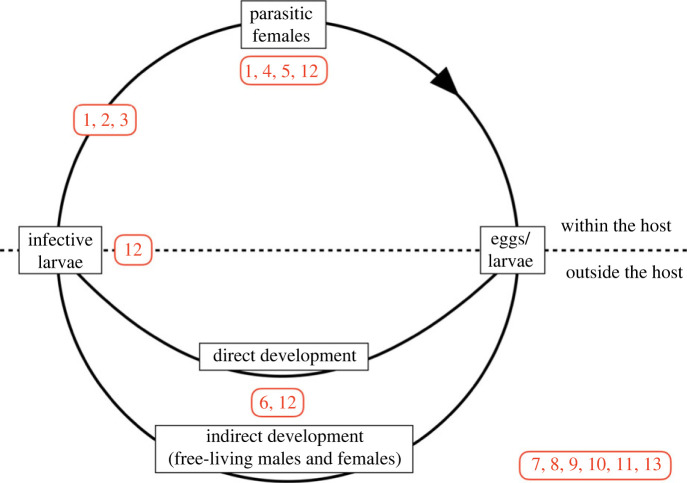Figure 1.
The life cycle of Strongyloides, with parasitic female worms inside hosts that produce eggs that pass out of the host, where larvae either develop (i) directly to infective larvae that infect a host and migrate to the host gut, or (ii) indirectly into free-living adult males and females, whose progeny develop into infective larvae, which then infect a host. Strongyloides stercoralis, the parasite of people, also undergoes internal autoinfection. Questions 1, 2, 3, 4, 5, 6 and 12 (shown in red) are about specific aspects of the Strongyloides life cycle and are shown at the point in the life cycle where they pertain; Questions 7, 8, 9, 10, 11 and 13 do not directly apply to the life cycle, and are shown separately.

